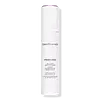What's inside
What's inside
 Key Ingredients
Key Ingredients

No key ingredients
 Benefits
Benefits

 Concerns
Concerns

 Ingredients Side-by-side
Ingredients Side-by-side

Water
Skin ConditioningButylene Glycol
HumectantDipropylene Glycol
HumectantGlycerin
HumectantHydrogenated Polydecene
EmollientTriethylhexanoin
MaskingHdi/Trimethylol Hexyllactone Crosspolymer
Dimethicone
EmollientDipeptide-15
Skin ConditioningGlyceryl Stearate Se
EmulsifyingTrehalose
HumectantTocopherol
AntioxidantSaccharum Officinarum Extract
MoisturisingCitrus Aurantium Dulcis Fruit Extract
MaskingCitrus Limon Fruit Extract
MaskingSodium Hyaluronate
HumectantMorinda Citrifolia Leaf Extract
Skin ConditioningLeuconostoc/Radish Root Ferment Filtrate
AntimicrobialAcer Saccharum Extract
Skin ConditioningVaccinium Myrtillus Fruit Extract
Skin ConditioningSalvia Hispanica Seed Extract
EmollientGluconolactone
Skin ConditioningChondrus Crispus Extract
Skin ConditioningAminopropyl Dimethicone
Betaine
HumectantSodium Metabisulfite
AntioxidantIsostearic Acid
CleansingCoconut Acid
CleansingPEG-5 Glyceryl Stearate
EmulsifyingBehenyl Alcohol
EmollientStearic Acid
CleansingCarbomer
Emulsion StabilisingXanthan Gum
EmulsifyingPotassium Hydroxide
BufferingBehenic Acid
CleansingSilica
AbrasiveDisodium EDTA
Sodium Benzoate
MaskingPhenoxyethanol
PreservativeWater, Butylene Glycol, Dipropylene Glycol, Glycerin, Hydrogenated Polydecene, Triethylhexanoin, Hdi/Trimethylol Hexyllactone Crosspolymer, Dimethicone, Dipeptide-15, Glyceryl Stearate Se, Trehalose, Tocopherol, Saccharum Officinarum Extract, Citrus Aurantium Dulcis Fruit Extract, Citrus Limon Fruit Extract, Sodium Hyaluronate, Morinda Citrifolia Leaf Extract, Leuconostoc/Radish Root Ferment Filtrate, Acer Saccharum Extract, Vaccinium Myrtillus Fruit Extract, Salvia Hispanica Seed Extract, Gluconolactone, Chondrus Crispus Extract, Aminopropyl Dimethicone, Betaine, Sodium Metabisulfite, Isostearic Acid, Coconut Acid, PEG-5 Glyceryl Stearate, Behenyl Alcohol, Stearic Acid, Carbomer, Xanthan Gum, Potassium Hydroxide, Behenic Acid, Silica, Disodium EDTA, Sodium Benzoate, Phenoxyethanol
Water
Skin ConditioningCaprylic/Capric Triglyceride
MaskingGlycerin
HumectantCocos Nucifera Oil
MaskingSimmondsia Chinensis Seed Oil
EmollientCetearyl Alcohol
EmollientMicrocrystalline Cellulose
AbsorbentCandelilla/Jojoba/Rice Bran Polyglyceryl-3 Esters
EmulsifyingGlyceryl Stearate
EmollientPhenoxyethanol
PreservativeOpuntia Vulgaris Extract
Skin ConditioningCocos Nucifera Fruit Juice
EmollientSodium Stearoyl Lactylate
EmulsifyingCellulose Gum
Emulsion StabilisingXanthan Gum
EmulsifyingWater, Caprylic/Capric Triglyceride, Glycerin, Cocos Nucifera Oil, Simmondsia Chinensis Seed Oil, Cetearyl Alcohol, Microcrystalline Cellulose, Candelilla/Jojoba/Rice Bran Polyglyceryl-3 Esters, Glyceryl Stearate, Phenoxyethanol, Opuntia Vulgaris Extract, Cocos Nucifera Fruit Juice, Sodium Stearoyl Lactylate, Cellulose Gum, Xanthan Gum
Ingredients Explained
These ingredients are found in both products.
Ingredients higher up in an ingredient list are typically present in a larger amount.
Glycerin is already naturally found in your skin. It helps moisturize and protect your skin.
A study from 2016 found glycerin to be more effective as a humectant than AHAs and hyaluronic acid.
As a humectant, it helps the skin stay hydrated by pulling moisture to your skin. The low molecular weight of glycerin allows it to pull moisture into the deeper layers of your skin.
Hydrated skin improves your skin barrier; Your skin barrier helps protect against irritants and bacteria.
Glycerin has also been found to have antimicrobial and antiviral properties. Due to these properties, glycerin is often used in wound and burn treatments.
In cosmetics, glycerin is usually derived from plants such as soybean or palm. However, it can also be sourced from animals, such as tallow or animal fat.
This ingredient is organic, colorless, odorless, and non-toxic.
Glycerin is the name for this ingredient in American English. British English uses Glycerol/Glycerine.
Learn more about GlycerinPhenoxyethanol is a preservative that has germicide, antimicrobial, and aromatic properties. Studies show that phenoxyethanol can prevent microbial growth. By itself, it has a scent that is similar to that of a rose.
It's often used in formulations along with Caprylyl Glycol to preserve the shelf life of products.
Water. It's the most common cosmetic ingredient of all. You'll usually see it at the top of ingredient lists, meaning that it makes up the largest part of the product.
So why is it so popular? Water most often acts as a solvent - this means that it helps dissolve other ingredients into the formulation.
You'll also recognize water as that liquid we all need to stay alive. If you see this, drink a glass of water. Stay hydrated!
Learn more about WaterXanthan gum is used as a stabilizer and thickener within cosmetic products. It helps give products a sticky, thick feeling - preventing them from being too runny.
On the technical side of things, xanthan gum is a polysaccharide - a combination consisting of multiple sugar molecules bonded together.
Xanthan gum is a pretty common and great ingredient. It is a natural, non-toxic, non-irritating ingredient that is also commonly used in food products.
Learn more about Xanthan Gum